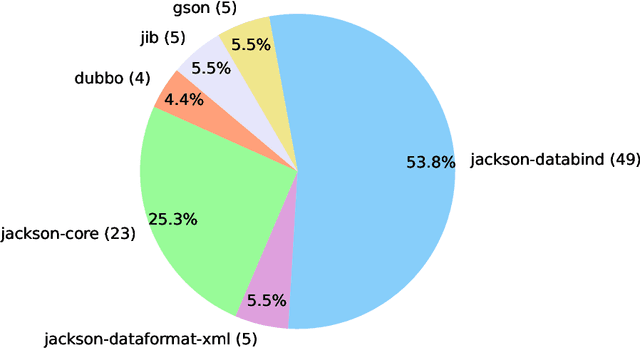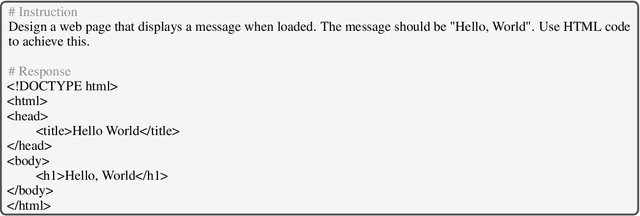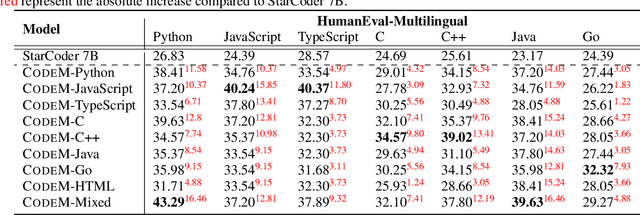Bo Shen
James
DeepOFormer: Deep Operator Learning with Domain-informed Features for Fatigue Life Prediction
Mar 28, 2025Abstract:Fatigue life characterizes the duration a material can function before failure under specific environmental conditions, and is traditionally assessed using stress-life (S-N) curves. While machine learning and deep learning offer promising results for fatigue life prediction, they face the overfitting challenge because of the small size of fatigue experimental data in specific materials. To address this challenge, we propose, DeepOFormer, by formulating S-N curve prediction as an operator learning problem. DeepOFormer improves the deep operator learning framework with a transformer-based encoder and a mean L2 relative error loss function. We also consider Stussi, Weibull, and Pascual and Meeker (PM) features as domain-informed features. These features are motivated by empirical fatigue models. To evaluate the performance of our DeepOFormer, we compare it with different deep learning models and XGBoost on a dataset with 54 S-N curves of aluminum alloys. With seven different aluminum alloys selected for testing, our DeepOFormer achieves an R2 of 0.9515, a mean absolute error of 0.2080, and a mean relative error of 0.5077, significantly outperforming state-of-the-art deep/machine learning methods including DeepONet, TabTransformer, and XGBoost, etc. The results highlight that our Deep0Former integrating with domain-informed features substantially improves prediction accuracy and generalization capabilities for fatigue life prediction in aluminum alloys.
CodeV: Issue Resolving with Visual Data
Dec 23, 2024Abstract:Large Language Models (LLMs) have advanced rapidly in recent years, with their applications in software engineering expanding to more complex repository-level tasks. GitHub issue resolving is a key challenge among these tasks. While recent approaches have made progress on this task, they focus on textual data within issues, neglecting visual data. However, this visual data is crucial for resolving issues as it conveys additional knowledge that text alone cannot. We propose CodeV, the first approach to leveraging visual data to enhance the issue-resolving capabilities of LLMs. CodeV resolves each issue by following a two-phase process: data processing and patch generation. To evaluate CodeV, we construct a benchmark for visual issue resolving, namely Visual SWE-bench. Through extensive experiments, we demonstrate the effectiveness of CodeV, as well as provide valuable insights into leveraging visual data to resolve GitHub issues.
Deep Computer Vision for Solar Physics Big Data: Opportunities and Challenges
Sep 07, 2024Abstract:With recent missions such as advanced space-based observatories like the Solar Dynamics Observatory (SDO) and Parker Solar Probe, and ground-based telescopes like the Daniel K. Inouye Solar Telescope (DKIST), the volume, velocity, and variety of data have made solar physics enter a transformative era as solar physics big data (SPBD). With the recent advancement of deep computer vision, there are new opportunities in SPBD for tackling problems that were previously unsolvable. However, there are new challenges arising due to the inherent characteristics of SPBD and deep computer vision models. This vision paper presents an overview of the different types of SPBD, explores new opportunities in applying deep computer vision to SPBD, highlights the unique challenges, and outlines several potential future research directions.
SWE-bench-java: A GitHub Issue Resolving Benchmark for Java
Aug 26, 2024



Abstract:GitHub issue resolving is a critical task in software engineering, recently gaining significant attention in both industry and academia. Within this task, SWE-bench has been released to evaluate issue resolving capabilities of large language models (LLMs), but has so far only focused on Python version. However, supporting more programming languages is also important, as there is a strong demand in industry. As a first step toward multilingual support, we have developed a Java version of SWE-bench, called SWE-bench-java. We have publicly released the dataset, along with the corresponding Docker-based evaluation environment and leaderboard, which will be continuously maintained and updated in the coming months. To verify the reliability of SWE-bench-java, we implement a classic method SWE-agent and test several powerful LLMs on it. As is well known, developing a high-quality multi-lingual benchmark is time-consuming and labor-intensive, so we welcome contributions through pull requests or collaboration to accelerate its iteration and refinement, paving the way for fully automated programming.
Neural Operator for Accelerating Coronal Magnetic Field Model
May 21, 2024Abstract:Studying the sun's outer atmosphere is challenging due to its complex magnetic fields impacting solar activities. Magnetohydrodynamics (MHD) simulations help model these interactions but are extremely time-consuming (usually on a scale of days). Our research applies the Fourier Neural Operator (FNO) to accelerate the coronal magnetic field modeling, specifically, the Bifrost MHD model. We apply Tensorized FNO (TFNO) to generate solutions from partial differential equations (PDEs) over a 3D domain efficiently. TFNO's performance is compared with other deep learning methods, highlighting its accuracy and scalability. Physics analysis confirms that TFNO is reliable and capable of accelerating MHD simulations with high precision. This advancement improves efficiency in data handling, enhances predictive capabilities, and provides a better understanding of magnetic topologies.
CodeS: Natural Language to Code Repository via Multi-Layer Sketch
Mar 25, 2024



Abstract:The impressive performance of large language models (LLMs) on code-related tasks has shown the potential of fully automated software development. In light of this, we introduce a new software engineering task, namely Natural Language to code Repository (NL2Repo). This task aims to generate an entire code repository from its natural language requirements. To address this task, we propose a simple yet effective framework CodeS, which decomposes NL2Repo into multiple sub-tasks by a multi-layer sketch. Specifically, CodeS includes three modules: RepoSketcher, FileSketcher, and SketchFiller. RepoSketcher first generates a repository's directory structure for given requirements; FileSketcher then generates a file sketch for each file in the generated structure; SketchFiller finally fills in the details for each function in the generated file sketch. To rigorously assess CodeS on the NL2Repo task, we carry out evaluations through both automated benchmarking and manual feedback analysis. For benchmark-based evaluation, we craft a repository-oriented benchmark, SketchEval, and design an evaluation metric, SketchBLEU. For feedback-based evaluation, we develop a VSCode plugin for CodeS and engage 30 participants in conducting empirical studies. Extensive experiments prove the effectiveness and practicality of CodeS on the NL2Repo task.
Can Programming Languages Boost Each Other via Instruction Tuning?
Sep 03, 2023



Abstract:When human programmers have mastered a programming language, it would be easier when they learn a new programming language. In this report, we focus on exploring whether programming languages can boost each other during the instruction fine-tuning phase of code large language models. We conduct extensive experiments of 8 popular programming languages (Python, JavaScript, TypeScript, C, C++, Java, Go, HTML) on StarCoder. Results demonstrate that programming languages can significantly improve each other. For example, CodeM-Python 15B trained on Python is able to increase Java by an absolute 17.95% pass@1 on HumanEval-X. More surprisingly, we found that CodeM-HTML 7B trained on the HTML corpus can improve Java by an absolute 15.24% pass@1. Our training data is released at https://github.com/NL2Code/CodeM.
PanGu-Coder2: Boosting Large Language Models for Code with Ranking Feedback
Jul 27, 2023Abstract:Large Language Models for Code (Code LLM) are flourishing. New and powerful models are released on a weekly basis, demonstrating remarkable performance on the code generation task. Various approaches have been proposed to boost the code generation performance of pre-trained Code LLMs, such as supervised fine-tuning, instruction tuning, reinforcement learning, etc. In this paper, we propose a novel RRTF (Rank Responses to align Test&Teacher Feedback) framework, which can effectively and efficiently boost pre-trained large language models for code generation. Under this framework, we present PanGu-Coder2, which achieves 62.20% pass@1 on the OpenAI HumanEval benchmark. Furthermore, through an extensive evaluation on CoderEval and LeetCode benchmarks, we show that PanGu-Coder2 consistently outperforms all previous Code LLMs.
Provable Convergence of Tensor Decomposition-Based Neural Network Training
Mar 13, 2023



Abstract:Advanced tensor decomposition, such as tensor train (TT), has been widely studied for tensor decomposition-based neural network (NN) training, which is one of the most common model compression methods. However, training NN with tensor decomposition always suffers significant accuracy loss and convergence issues. In this paper, a holistic framework is proposed for tensor decomposition-based NN training by formulating TT decomposition-based NN training as a nonconvex optimization problem. This problem can be solved by the proposed tensor block coordinate descent (tenBCD) method, which is a gradient-free algorithm. The global convergence of tenBCD to a critical point at a rate of O(1/k) is established with the Kurdyka {\L}ojasiewicz (K{\L}) property, where k is the number of iterations. The theoretical results can be extended to the popular residual neural networks (ResNets). The effectiveness and efficiency of our proposed framework are verified through an image classification dataset, where our proposed method can converge efficiently in training and prevent overfitting.
Can Gradient Descent Provably Learn Linear Dynamic Systems?
Nov 19, 2022Abstract:We study the learning ability of linear recurrent neural networks with gradient descent. We prove the first theoretical guarantee on linear RNNs with Gradient Descent to learn any stable linear dynamic system. We show that despite the non-convexity of the optimization loss if the width of the RNN is large enough (and the required width in hidden layers does not rely on the length of the input sequence), a linear RNN can provably learn any stable linear dynamic system with the sample and time complexity polynomial in $\frac{1}{1-\rho_C}$ where $\rho_C$ is roughly the spectral radius of the stable system. Our results provide the first theoretical guarantee to learn a linear RNN and demonstrate how can the recurrent structure help to learn a dynamic system.
 Add to Chrome
Add to Chrome Add to Firefox
Add to Firefox Add to Edge
Add to Edge